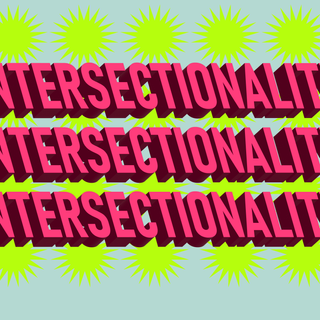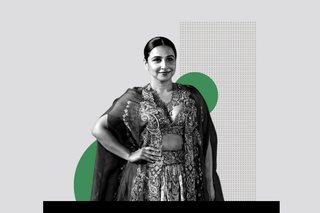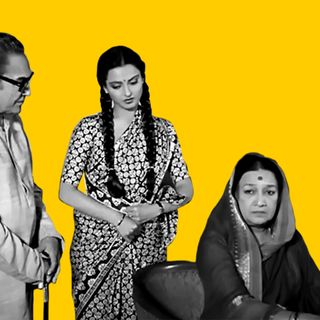
How Vidya Balan’s Celebrity Has Defied the Idea of the ‘Fashion Police’
Balan’s resistance to the dictatorial standards laid down by the fashion police earned her the respect and admiration of millions of Indians.

At the Dadasaheb Phalke International Film Festival this week, actor Vidya Balan turned heads in her green embroidered lehenga and cape jacket ensemble — so much so, that her image has accompanied a number of news articles covering the function itself. The widespread appreciation of her sartorial choice is a reminder of how far the Indian celebrity culture has come from the era of the almost dictatorial reign of the ‘fashion police,’ which repeatedly picked a bone with Balan.
Moreover, it laid bare the Indian celebrity zeitgeist’s fixation with mirroring Hollywood celebrity culture, where sarees and lehengas had no place amid Oscar de la Renta and Balenciaga gowns.
For people who followed Bollywood news in the late 2000s, Balan’s run-ins with the fashion police were a routine affair. From fat-shaming her to bullying her for her fashion choices, Indian media has done it all. Initially, Balan had briefly — and rather naturally — succumbed to the fashion police’s stipulations. Earlier in her career, the body shaming she was subjected to, prompted her to hate her body and go on crash diets to be able to fit into society’s beauty norms. She experimented with chic, contemporary looks in Heyy Babyy (2007) and Kismat Konnection (2008). Soon, however, she realized there was no pleasing the fashion police since their goalposts were constantly shifting. “Even when I was at my thinnest, I felt fat,” she says.
Looking back at the ordeal, Balan joked that her weight had almost become a “national issue” — indeed, the media’s obsession with Balan’s body and choice of attire regularly earned its own segment in news cycles before the rise of the social media. But while many celebrities have found themselves on the radar of the fashion police, what makes Balan’s tryst with it remarkable is that instead of giving in, she chose to go against the grain by embracing her body and her choices. Arguably, her defiance of fashion culture in India spurned the power of the institution itself.
Related on The Swaddle:
Our Obsession With Every Cannes Look Reveals Our Need for Validation From the West
The subsequent retaliation by the fashion police wasn’t light: in 2013, the news of Balan being a member of the jury at the Festival de Cannes was overshadowed by a barrage of sexist insults critiquing her sartorial choices on the red carpet. “I’m not sure how well Balan fared at judging the films but the minute she stepped on stage, it was clear that she has lost the style stakes big time… [She] struck out again as she arrived for the cocktails at the Martinez Hotel wearing another questionable creation… Both outfits are perfect examples of ‘desi-gone-disastrous’ and a reminder that pulling off a desi look should not result in the person looking like a caricature of every Indian stereotype,” noted one of the many scathing reviews at the time.
Years later, some of the same attires have been dubbed “timeless” by Indian audiences — yet again, rejecting the importance given to the fashion police. But at the time, the lack of recognition for her achievements aside, the relentlessness of the criticism was so overwhelming that designer Sabyasachi Mukherjee, who was dragged under the scanner for his designs, was almost forced to defend his creations.
Still, Balan continued wearing the sarees that had driven the fashion police up the wall and earned her adjectives like “boring,” “monotonous,” and “aging.” Not only that, but she went on to play characters — in movies like Ishqiya (2010), Bobby Jasoos (2014), Tumhari Sulu (2017), Mission Mangal (2019), and Shakuntala Devi (2020) — who dressed like the majority of Indian women, who neither have the time nor the privilege to cater to the fashion police’s idea of beauty.
In the process, Balan’s rejection of the self-proclaimed gatekeepers of fashion paved way for an empowering narrative of beauty that “represented lakhs of women who were being pressured by unreal body standards that were being forced upon them by [the] fashion and glamour industry,” wrote entertainment journalist Mimansa Shekhar in The Indian Express. Balan’s defiance of the fashion police, then, became an instrument to reclaim her agency over her own body.
Related on The Swaddle:
2008 also ushered in the era of size zero in India through Kareena Kapoor Khan’s Tashan, which reportedly led her to become so malnourished that she fainted on the sets of movies. Balan countered that in 2011 with The Dirty Picture — playing the “boldest character of her career,” Balan gained 12 kilograms for the role.
Balan’s resistance to the standards laid down by the fashion police — which has led a number of female actors to develop body image issues — eventually earned her the respect and admiration of millions of Indians. “What happened is that I began to love and accept myself a little more each day, and therefore, I became more acceptable to people. They began to shower me with love and accolades and appreciation and all of that,” she said in 2021.
But what’s probably more inspiring is how it improved Balan’s relationship with her own body. “I have had hormonal issues all my life. For the longest time, I hated my body. I thought it had betrayed me. On the days I was under the pressure of looking my best, I would bloat up and I would be so angry and frustrated… Today, I am at my fittest best. Because I eat without guilt.”
Fashion, at the end of the day, is a form of self-expression. Confining it to homogenous standards threatens to upend the freedom that is integral to molding fashion itself. Courtesy of the self-proclaimed fashion police, however, fashion doesn’t just earn a bad reputation, but victimizes actual human beings. In its heyday, India’s fashion police defined everything from what counts as style to what Indian women should aspire to. In its quest to set benchmarks, it opted to look Westward. Against a culture that pumped an inferiority complex into the minds of many Indian women, Balan’s tryst with beauty in the public eye ended with her turning inward — reclaiming what it means to be beautiful for everyone, in the process.
“There is no end to rejecting your body and spending a lifetime doing that,” Balan had once said. “[Y]our body needs at least one person on its side, and I said to myself that this is my body, and I love it.”
Devrupa Rakshit is an Associate Editor at The Swaddle. She is a lawyer by education, a poet by accident, a painter by shaukh, and autistic by birth. You can find her on Instagram @devruparakshit.
Related


Woe Is Me! “My In‑Laws Undermine My Parenting, Career. What Should I Do?”
